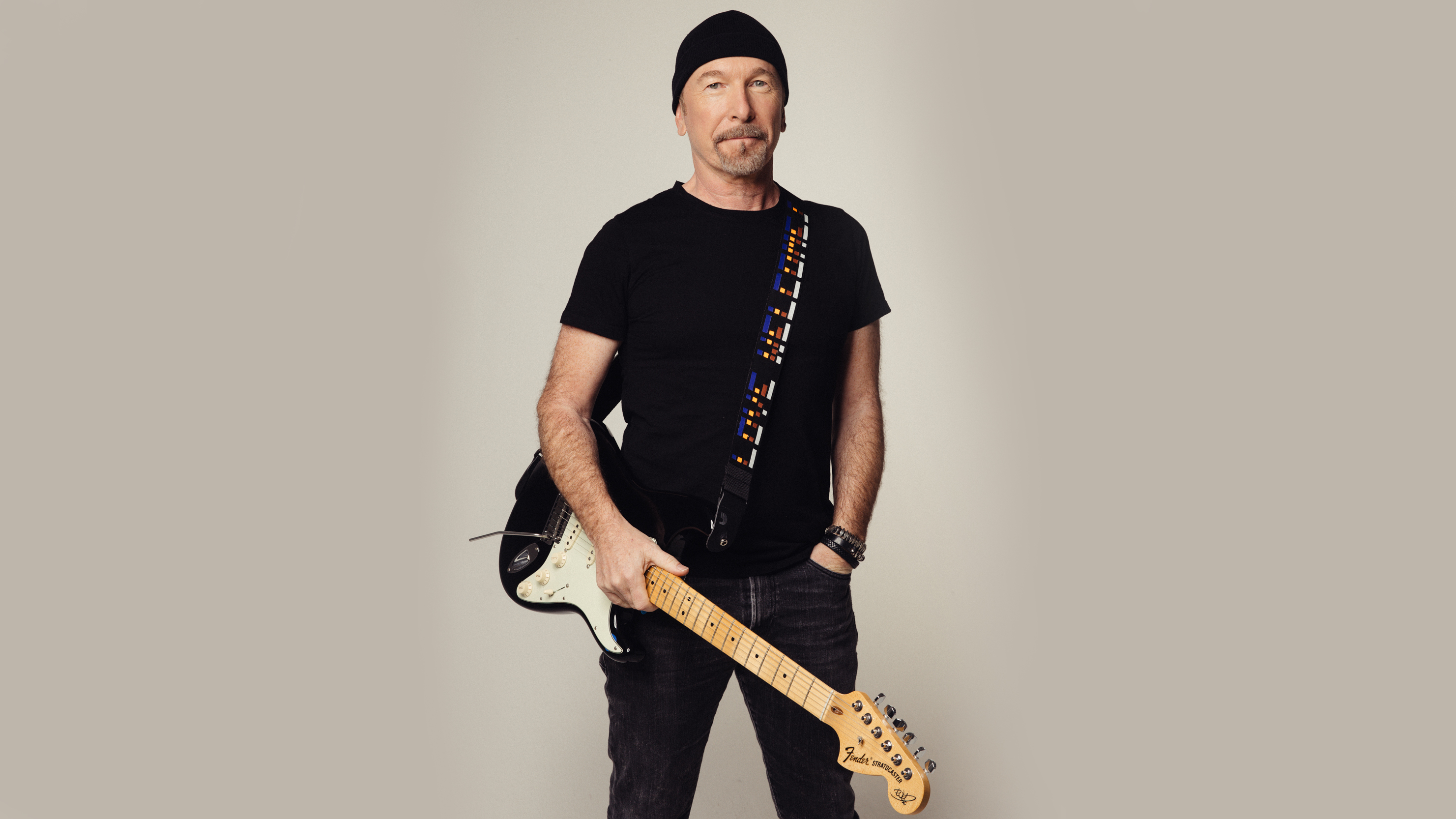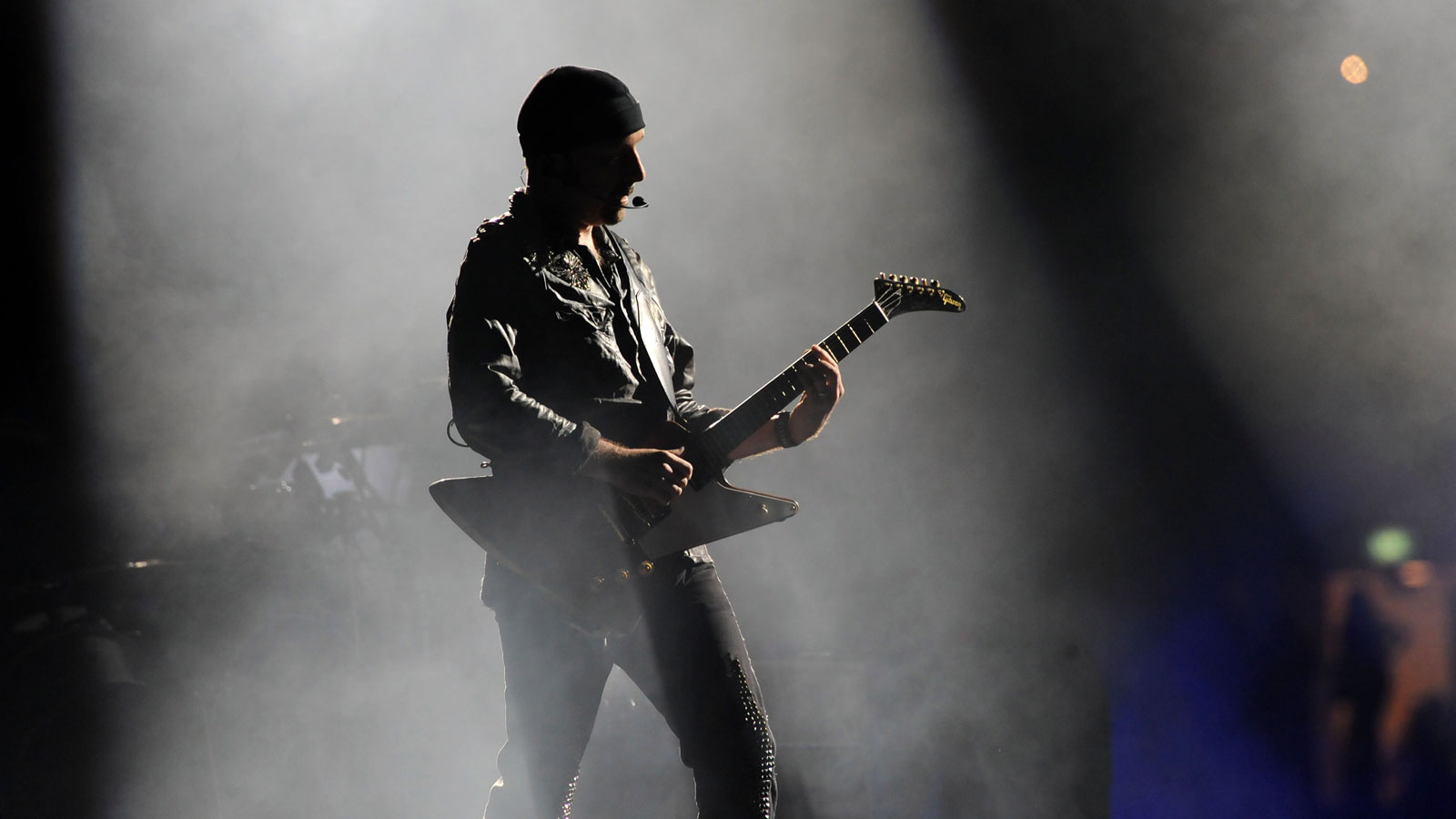5 underappreciated U2 songs guitarists need to hear by… The Edge
Celebrating Achtung Baby's 30th anniversary and other gems

One, Where The Streets Have No Name, Pride (In The Name Of Love), Bullet The Blue Sky, The Fly, Beautiful Day… in the 40 years since the band released debut album Boy, there’s been a steady stream of go-to U2 anthems built around the uniquely creative, pioneering guitar approach of The Edge.
But his creativity isn’t confined to the epic arena-fillers, so we’ve picked five lesser celebrated but nonetheless spectacular examples of his talent that are well worth discovering or revisiting.
For a player pigeonholed by some as a literally repetitive delay merchant, these songs are quite different from each other – both U2 generally and The Edge in particular have been underrated over the years for the variety in their output and it’s odd to think that, for example, I Threw A Brick Through A Window and Miami are the work of the same songwriters.
The same depth of field applies equally to the guitar playing: and hopefully, this small selection will persuade the dubious that there’s much more to The Edge’s six-string offerings than the familiar chimes and delay trails of the mega hits.
1. A Sort Of Homecoming
The confrontational theme of 1983 album War demanded a brutal and stripped-down approach to sonics, exemplified by Sunday Bloody Sunday’s martial snare, strident arpeggio riff and dissonant solo.
To avoid being pigeonholed as angry protest rockers, on follow-up, The Unforgettable Fire, the band teamed up with Brian Eno and Daniel Lanois, The Edge bought two Korg SDD-3000 digital delay units and they recorded in a spooky castle to consciously explore a more sophisticated sound.
Opening track A Sort Of Homecoming sets out the stall of their new ambient, yet anthemic soundscape: The Edge was still obliquely spelling out chord progressions with arpeggiated chords, but now they shimmered and flickered in a wash of ghostly modulated delay and reverb.
His playing on the track is if anything more energetic and physical than ever: the song’s intro combines muted string scrapes, edge-of-feedback squeals and rapid finger slides through delay and the song’s main section is driven by fiercely strummed sus4 chords and chiming open strings.
Want all the hottest music and gear news, reviews, deals, features and more, direct to your inbox? Sign up here.
The difference from before is on this album, his role changed to enable him to create layered guitar sounds to build atmosphere, rather than always coming up with attention-grabbing standalone licks that carry the entire song. The result, on A Sort Of Homecoming particularly, is a rich, shapeshifting soundscape that reveals something new on practically every listen and it’s a great leap forward for The Edge as a sonic mastermind.
2. Love Is Blindness
Achtung Baby is a noisy, belligerent record, but its closing song provides a raw and introspective finale. It was written on piano by Bono and originally intended for Nina Simone, but having played it together, the band decided to keep it for themselves, building its mood around organ and a tremolo-like pulsing bass sound.
Throughout, The Edge punctuates the lyric with drifting volume swells of modulated distortion, sticking to single notes to create a maudlin, crying-note effect through their repetition.

When it comes to the solo, though, he electrifies the sombre atmosphere with a crackling, intense lightning storm of a guitar solo that comes from a different place entirely – it’s arresting, angry and completely at odds with the song’s otherwise somnambulant mood.
One of the ideas ‘knocking around’ during the session was to distract musicians during their solos to create less predictable results. “I was not enjoying this concept at all,” and Edge told The Times. “So I stopped and more or less told them to leave me alone. Then I put down the solo that we ended up using, and it’s one of my favourites.”
"Ordinarily, he’s so gentle. All that left him for a kind of rage"
During the making of the album, the guitarist was going through a divorce and perhaps this was on his mind when he summoned this sudden outpouring of wounded tremolo picking, recorded using the gritty sound of a small amp: he wasn’t even deterred by breaking a string. “He just kept playing harder and harder,” Bono recalled. “Another string broke. And he has such a light touch, ordinarily, he’s so gentle. All that left him for a kind of rage.”
3. Gone
From small amps and tremolo picking to monster effects riffery – U2’s 1997 Pop album was an ambitious extension of its recent predecessors’ experimentations that saw the band work with producers Flood, Howie B and Steve Osborne to incorporate samples, looping and programming from the world of electronica into the U2 sound.
The album ultimately divided opinion among critics and fans, but The Edge at least took the opportunity to explore the new possibilities the framework offered him, including using filtering, looping fragments of his own sampled guitar and working on new creations such as the mighty sound dominating Gone.
The setup was nicknamed the ‘747 sound’ for its sonic bloom and jet-like swoosh. Flood described it as a semi-hollowbody Epiphone or Gretsch into a Korg SDD delay set to heavy feedback, fed into a Fuzz Face and a second fuzz pedal, with a DigiTech Whammy on its octave +2 setting used to create the manually controlled sweeps: overall, the guitar part has a five-octave range. “The way he’s got it set up,” Flood told Guitar Player in 1997, “the guitar starts feeding back in a controllable way that sounds very uncontrollable.”
4. Until The End Of The World
U2 have made a few forays into film soundtrack work over the years. In 1986, The Edge created the mostly instrumental soundtrack to Captive, still his only solo album, and in 1995, U2 contributed Hold Me, Thrill Me, Kiss Me, Kill Me to the Batman Forever film soundtrack – the same year, the whole band collaborated on 1995’s Passengers project with Brian Eno on Original Soundtracks 1, a series of ‘visual music’ explorations soundtracking (mostly) imaginary films.
Having agreed to provide a song for 1991 Wim Wenders sci-fi road movie Until The End Of The World, The Edge revisited an old demo called Fat Boy featuring a promising Bono riff, stuck a capo on and threw every trick in his considerable arsenal at it.
Bono narrates the song from the viewpoint of Judas Iscariot betraying Jesus, and after a tortured Whammy intro, Edge responds with an unholy concoction of resonant distorted echo-laced arpeggios, octave riffs, harmonics, a Zepp-esque main riff and a mean and vengeful solo section that combines piercing high notes with descending string slides and fleet-fingered legato, enveloped on the record by swells of reversed guitar noise. An uncharacteristically OTT display of unadulterated guitar heroics, it’s one of his most commanding and creative recordings.
5. Unknown Caller
By the time of 2009’s No Line On The Horizon, The Edge had been a production-savvy player for decades and Unknown Caller is a procession of beautifully judged guitar parts building to an expertly crafted rock symphony.
Doubled guitar parts on either side of a stereo mix are a reliable way of creating space and depth and here, they offer a great way to hear The Edge’s individual arpeggiated guitar parts ringing out with excellent separation. Subtle dashes of acoustic are used to emphasise accents, fuzzy single-note lines follow the bassline to build tension and The Edge contrasts diffident volume swells with sonorous pinch-picked compressed chord passages to dynamic effect.

The song’s solo, which follows a middle section featuring the peculiar bedfellows of French horn and church organ, has been described by longtime guitar tech Dallas Schoo as “one of Edge's major solos in his life – you won’t hear better than that on any other song.”
Unusually clean and stark for an Edge creation, it was lifted in its entirety from the track’s original demo, a one-take performance created as the band improvised in a temporary studio setup they’d created in a rented Riad in Fez, in Morocco.